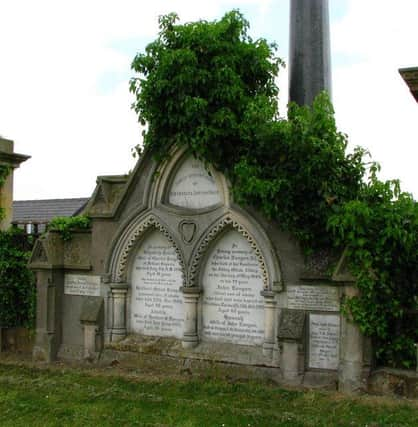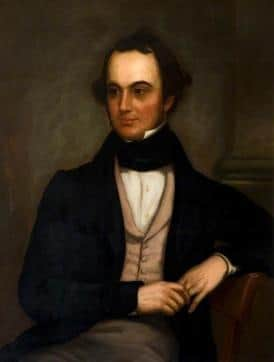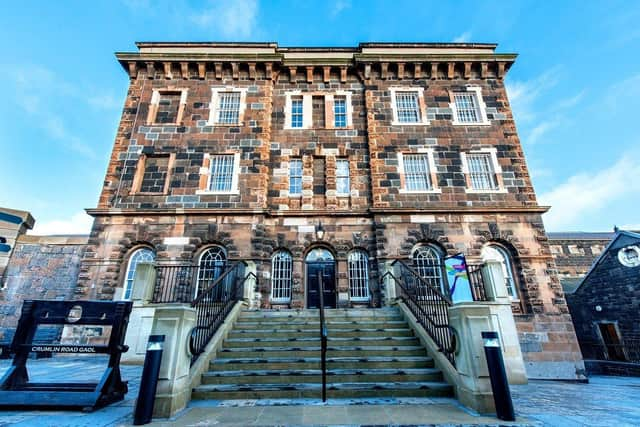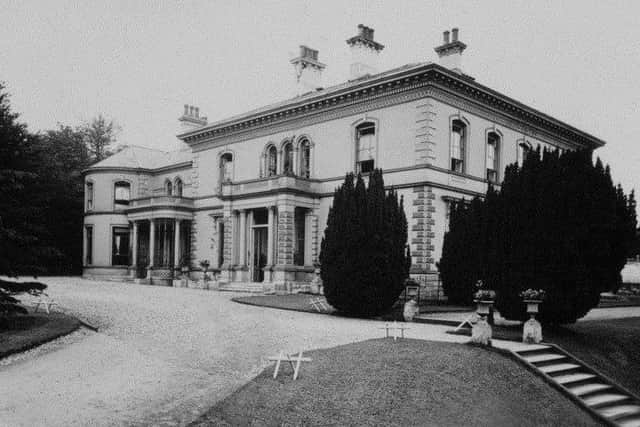An internet visit to the home of one of Belfast’s most famous architects


“I know Lord Belmont, aka Tim Ferres, an Old Campbellian,” a Roamer-reader e-mailed me recently, enclosing a link to an article from the blog about Sir Charles Lanyon.
Sir Charles was one of Belfast’s most acclaimed architects, and according to Lord Belmont’s blog he lived close to Roamer’s current home near Whiteabbey. Before sharing his article about Lanyon, here’s a short introduction to Lord Belmont.
Advertisement
Hide AdAdvertisement
Hide AdFounded in 2007 by Timothy William Ferres, the blog covers an awesome variety of topics such as heritage, the monarchy, food, drink, nobility, heraldry, travel, architecture, literature and pageantry.


If that list seems a little overwhelming, it’s not - everything is easy-reading, user-friendly, grippingly entertaining, colourful and enormously informative.
The blog title is fictitious, reflecting the part of Belfast where Tim Ferres lives.
“I am not a peer of the realm,” he admits, explaining that the blog’s fictional names such as Earl of Belmont, Viscount Sydenham and Baron Ballymisert all have close connections with East Belfast.
Advertisement
Hide AdAdvertisement
Hide AdEven though he has always been abundantly truthful about his invented titles, Lord Belmont recounts an hilarious tale about an invitation to dine with a senior churchman who thought he was Lord Belmore of Castle Coole! When Tim informed the clergyman of his error “he responded within hours, politely withdrawing his invitation to me.”


But now, his fictional lordship’s intriguing write-up about Sir Charles Lanyon, and the Whiteabbey connection.
Charles (1813-1889) was one of 10 children born to John Jenkinson Lanyon, of Eastbourne, East Sussex, and Elizabeth Helen, nee Owen of Portsmouth. He became the County Surveyor in Kildare before moving to Antrim in 1836, where he designed the famous Antrim coast road as well as many bridges, including Belfast’s Ormeau Bridge (1860-63) over the River Lagan.
Sir Charles Lanyon also laid out the Belfast and Ballymena railway lines, and the extensions to Cookstown and Portrush; was engineer of the Belfast, Holywood and Bangor Railway and the Carrickfergus and Larne line. He was the principal architect of some of Belfast’s best-known buildings, including the Queen’s College, now University (1846-9); the old Court-House (1848-50); Crumlin Road Gaol (1843-5) and the Custom House (1854-7).
Advertisement
Hide AdAdvertisement
Hide AdHis palm house in Belfast’s Botanic Gardens, built in two phases between 1840-52, is notably one of the earliest examples of curvilinear iron and glass.


Much of Lanyon’s work was carried out in private practice, in which he was assisted by two partners - W H Lynn, and latterly his eldest son John, from 1860.
Sir Charles designed The Abbey at Whiteabbey, County Antrim, for Richard Davison MP. It was an imposing two-storey, multi-bay, Italianate stucco house, built around 1855 and shortly afterwards becoming Lanyon’s own home, reflecting his personal taste.
The Abbey takes its name from the ancient monastery which originally stood in a field nearby, built by the Cistercian religious order (Trappist Monks) ca 1250, but damaged by the army of Edward the Bruce in 1315.
Advertisement
Hide AdAdvertisement
Hide AdThe ruins of the White Abbey survived for centuries but today there are no visible remains.
Lanyon’s Abbey is ‘L’ shaped in plan, with an additional rectangular building located to the north-west. It was originally described as “a very superior first class house…cemented and stone finished with stone quoins and dressings…very (finely) situated and close to Whiteabbey Station”.
The gate lodge was described as “…very neat and well finished”.
The Abbey also boasted a cow-house, stables with a bell (in a tower) and a green house.
Advertisement
Hide AdAdvertisement
Hide AdFollowing Lanyon’s death in 1889, The Abbey remained vacant for about six years. Records show that the leasehold has transferred to the Granville Hotels Company, although the freehold was still owned by the Lanyon family.
In 1906, the house was described as ‘auxiliary workhouses, gate lodges and land’.
The ownership was revised from Guardians of Belfast Union to Belfast Corporation in 1916, and the property was described as “auxiliary workhouse, gate lodges, office, hospital for consumptives and land”.
In 1913 this entry was crossed out with the exception of the gate lodges, and ‘electric power house’ was inserted, indicating a change of use. Abbey House was listed as a ‘municipal sanatorium, gate lodges, electric power, house, office and land’ about 1935, with the occupier stated as being Belfast Corporation (City Council).
Advertisement
Hide AdAdvertisement
Hide AdIt became Whiteabbey Sanatorium during WWI and Whiteabbey Hospital in the 1930s.
Lanyon resigned as Antrim County Surveyor in 1860, and then retired from practice completely following the breakup of his firm in 1872, to devote his energies to public life, in which he was already involved.
He served the office of Mayor of Belfast, 1862, and was MP for Belfast, 1865-68.
He was one of the Belfast Harbour Commissioners, a Deputy Lieutenant and a magistrate.
Advertisement
Hide AdAdvertisement
Hide AdIn 1862, Sir Charles was elected President of the Royal Institute of Architects of Ireland, and held office until 1868, when he received the honour of Knighthood, which was conferred by His Grace the Duke of Abercorn, Lord Lieutenant of Ireland.
In 1876, he served as High Sheriff of County Antrim. Sir Charles died at The Abbey in 1889 after a protracted illness, and was buried at Knockbreda cemetery, near Belfast.
For more about Lanyon, and to read Lord Belmont’s other wonderful accounts, visit http://lordbelmontinnorthernireland.blogspot.co.uk
Thank you for reading this story on our website. While I have your attention, I also have an important request to make of you.
Advertisement
Hide AdAdvertisement
Hide AdIn order for us to continue to provide high quality and trusted local news on this free-to-read site, I am asking you to also please purchase a copy of our newspaper whenever you are able to do so.
Our journalists are highly trained and our content is independently regulated by IPSO to some of the most rigorous standards in the world. But being your eyes and ears comes at a price. So we need your support more than ever to buy our newspapers during this crisis.
With the coronavirus lockdown having a major impact on many of our local valued advertisers - and consequently the advertising that we receive - we are more reliant than ever on you helping us to provide you with news and information by buying a copy of our newspaper when you can safely.
You can also enjoy unlimited access to the best news from across Northern Ireland and the UK by subscribing to newsletter.co.uk
Advertisement
Hide AdAdvertisement
Hide AdWith a digital subscription, you can read more than five articles, see fewer ads, enjoy faster load times, and get access to exclusive newsletters and content. Visit https://www.newsletter.co.uk/subscriptions now to sign up.
Thank you